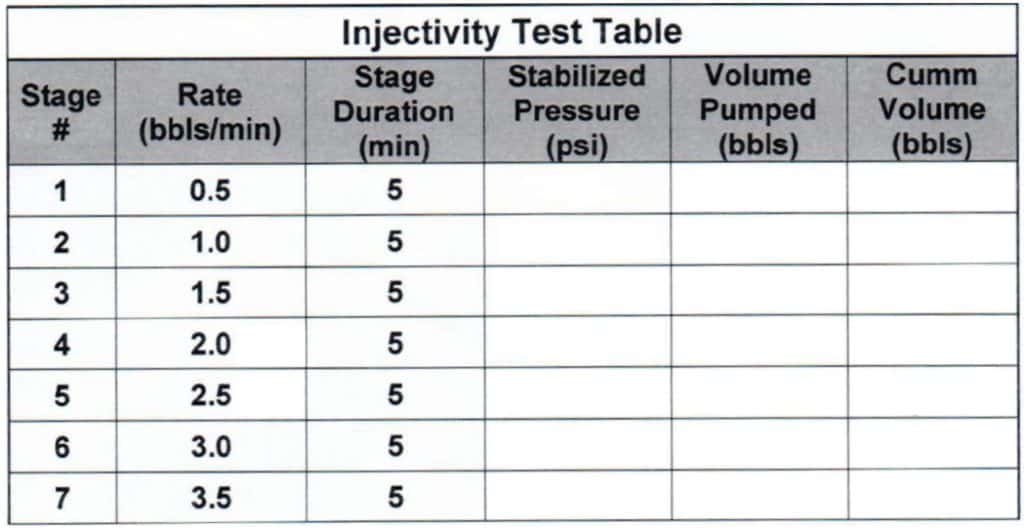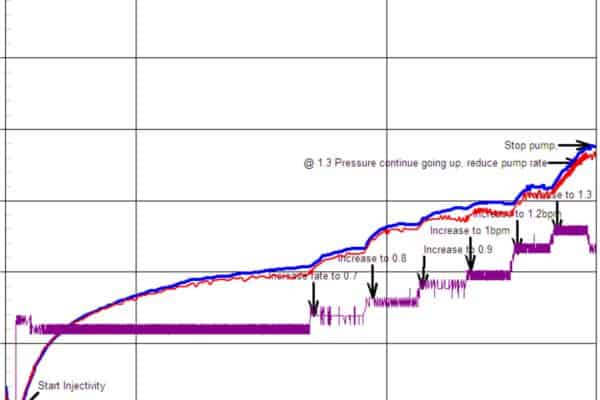This injectivity test page is the start of a series of posts covering cementing techniques applicable during workover, including specific job requirements, fluid characteristics, and testing procedures. We will cover each of the following job categories: Remedial cementing, well abandonment, and fluids control/shut-off.
I am initiating this series of posts, (you can find links to the next two at the bottom of the page), with an essential step in remedial cementing and the squeeze process: the injectivity test. Over the years, I have seen operator and cementing contractors alike implementing either improper procedures or inconsistent data analysis.
Let’s start with the basis:
The injectivity test is performed before squeeze cementing or a gel injection, aiming to understand the well’s response (surface pressure, without exceeding the MASP – Max. Allowable Surface Pressure) at different pumping rates during the subsequent fluid treatment.


(Green= rate, bpm; Red= pressure, psi; and Blue= cumulated volume, bbl)
The most important factors to consider include:
- The fluids injected should be clean.
- The wellbore should be circulated before injecting to prevent any plugging of the injection and flow path (perforations,
leak in a casing, etc.). - The injection should be conducted until pressure stabilizes for each step (5 to 10 min each).
- Increase rate while pumping pressure remains below target pressure or MASP.
- Injection should be taken at rates that maintain pressure below the MASP and never exceeding the fracturing pressure.
- Operational procedures should be kept consistent between different wells to enable meaningful comparisons.
- A perforation or leak wash treatment, e.g., small acid volume, may be applied to increase the injectivity.
Cheers,
L. Diaz
PS: Here are the links to the second and third articles in this series:


Great job